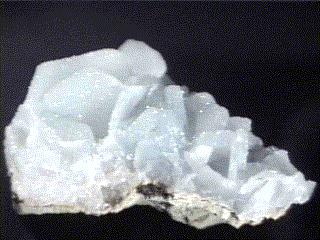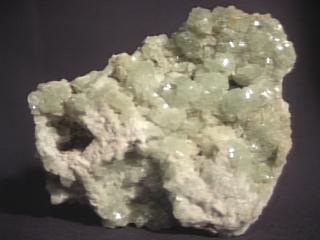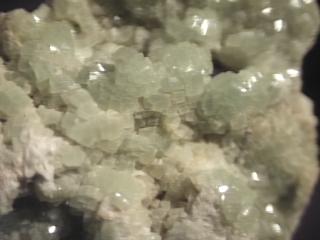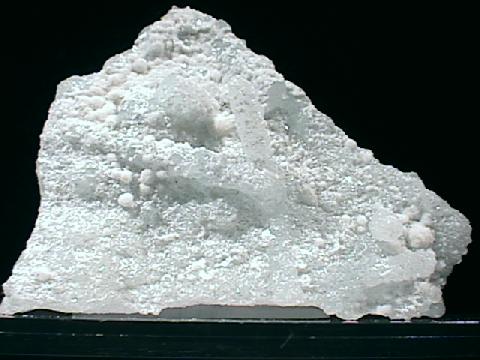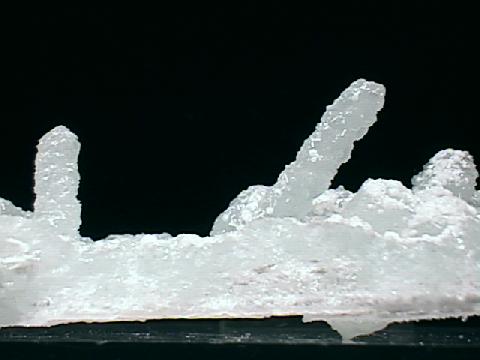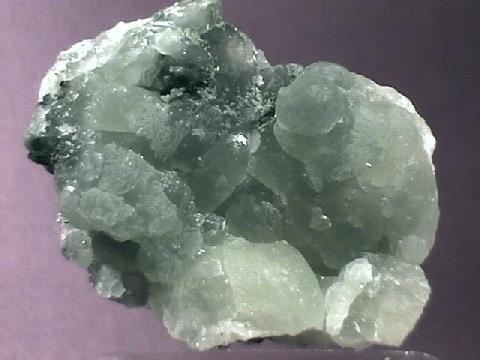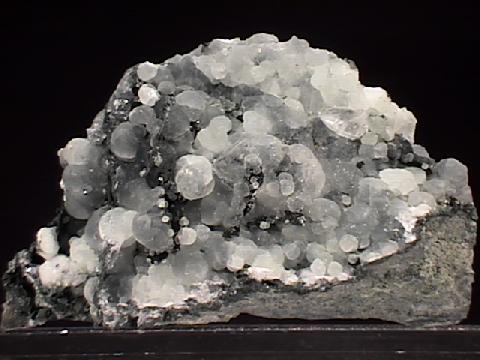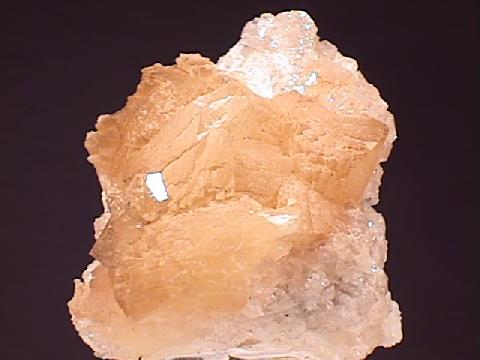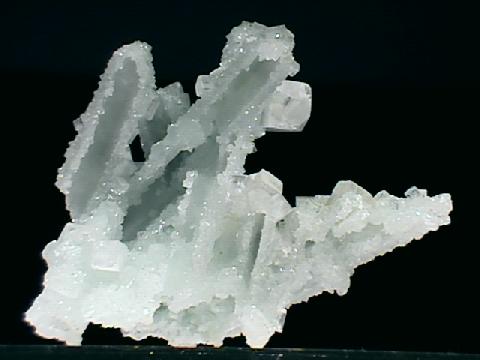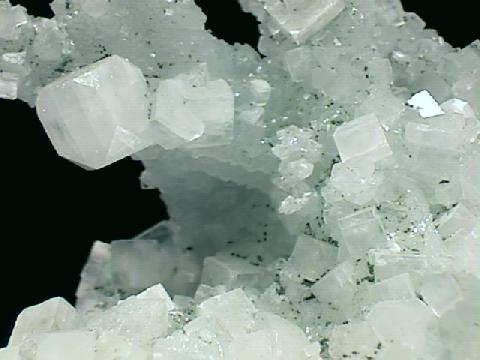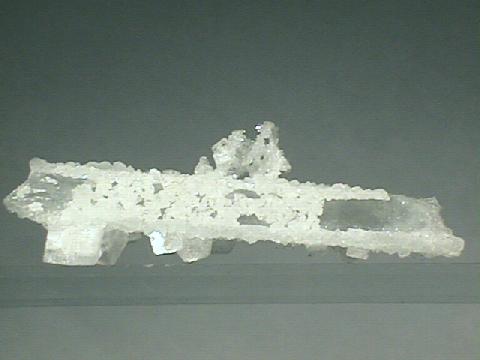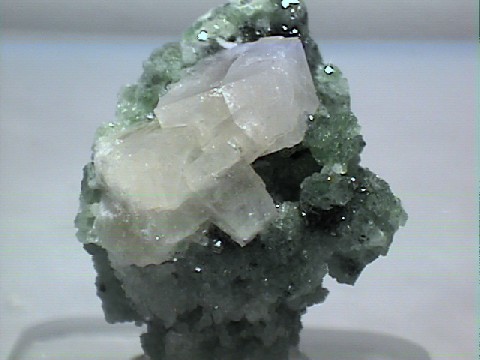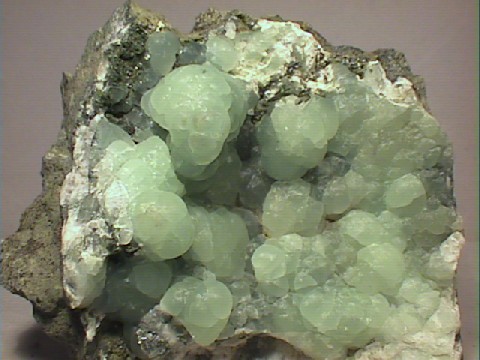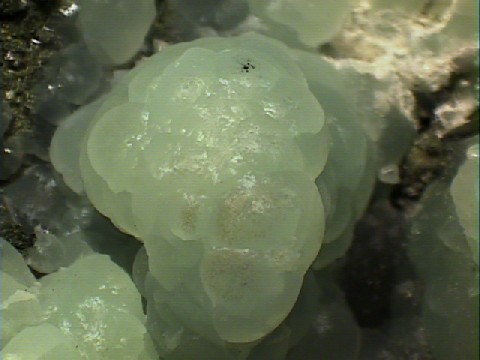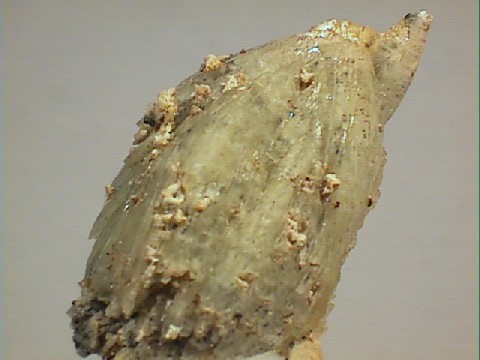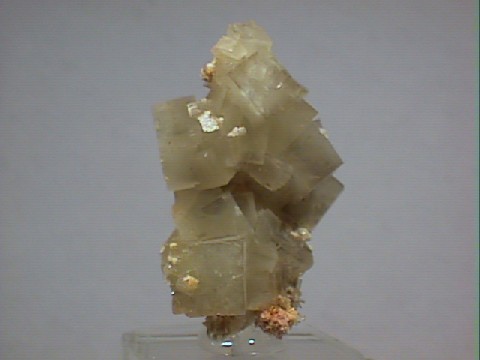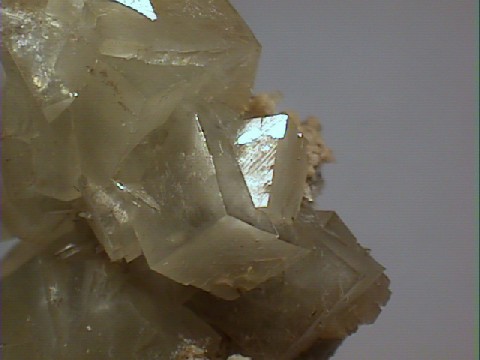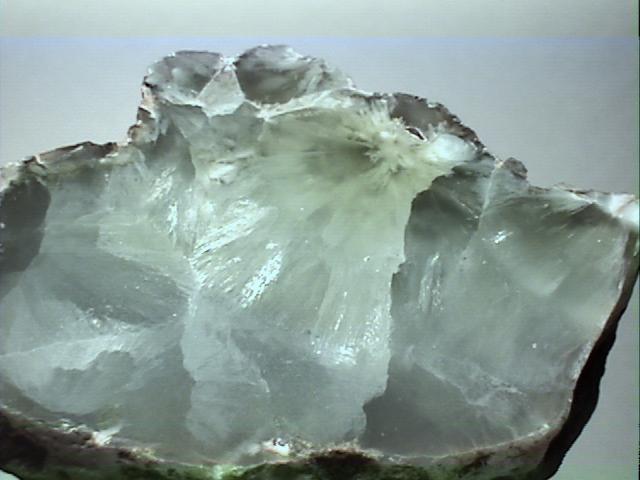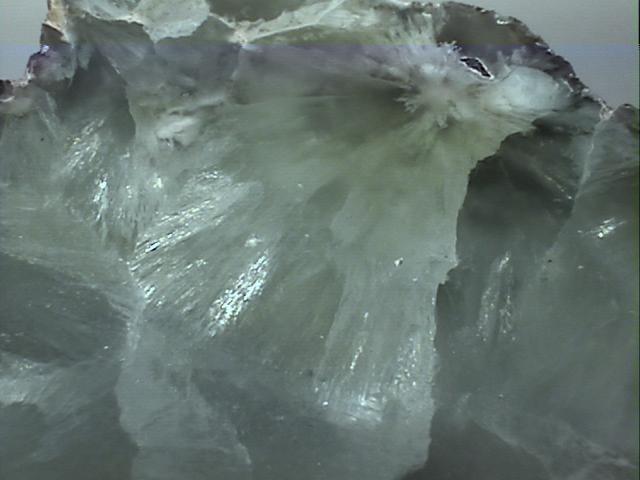 |
THE MINERAL |
 |
- Chemistry: Ca2 Al2 Si3 O10(OH)2, Calcium Aluminum Silicate Hydroxide.
- Class: Silicates
- Subclass: Phyllosilicates
- Uses: As mineral specimens and limited use for ornamental stone purposes.
Specimens
 - PREHNITE EPIMORPHS AFTER LAUMONTITE
- PREHNITE EPIMORPHS AFTER LAUMONTITEPrehnite is often found with zeolites and is sometimes thought of as a zeolite. But zeolites are actually tectosilicates and prehnite is a member the Phyllosilicates Subclass. However, like zeolites, prehnite can give off water when heated, but can not gain the water back like they can. Like most zeolites, prehnite is formed as a result of low grade metamorphism usually from hydrothermal solutions. Crystals can be found in cavities of mafic igneous rocks.
Minerals that can be confused with prehnite include gyrolite, smithsonite and hemimorphite. Prehnite is harder than all of these and lacks smithsonite's unusual luster. Hemimorphite is usually blue and gyrolite is not as glassy. Prehnite can be associated with many beautiful minerals and can make a fine specimen on its own. Its color, luster, associations and crystal habits make it a joy to own.
PHYSICAL CHARACTERISTICS:
- Color is usually a pale green to a yellowish grass green, also gray, white or colorless.
- Luster is vitreous to waxy or pearly.
- Transparency: Crystals are transparent to mostly translucent.
- Crystal System is orthorhombic; 2 m m.
- Crystal Habits include nodular, concretionary, radial, encrusting and stalactitic formations among other similar types. Tabular or pyramidal individual crystals are rare but some nodular specimens show tabular crystal protrusions. Epimorphs (crystal growth over the surface of another mineral) over laumontite are usual, but available (see above).
- Cleavage is good in one direction (pinacoidal).
- Fracture is uneven.
- Hardness is 6 - 6.5.
- Specific Gravity is approximately 2.9+ (average).
- Streak is white.
- Other Characteristics: Lacks the luster of smithsonite and cleavage surfaces are curved and pearly.
- Associated Minerals include datolite, gyrolite, fluorapophyllite, quartz, calcite, copper, pectolite, stilbite and other zeolites.
- Notable Occurrences include the type locality of Cape of Good Hope, South Africa as well as Connecticut; Pennsylvania; Patterson, New Jersey and Centreville, Virginia, USA; Bombay, India; Harz Mountains, Germany; Austria; Scotland; Copper Valley, Namibia; Jeffery Quarry, Asbestos, Canada; China; New South Wales, Australia and France.
- Best Field Indicators are crystal habit, color, cleavage, hardness and associations.

